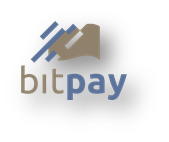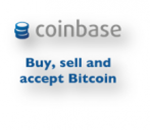Accepting Bitcoin
In the coming years, we are going to see an explosion of Bitcoin adoption. On this page, business people who are thinking of accepting Bitcoin can find some of the reasons to consider start and some tools and tips to help them do it.
If you are thinking of accepting Bitcoin, ask yourself the following questions:
- Do you pay too much in fees to credit card companies or other payment services? Accepting Bitcoin can cut the rate you pay from more than 3% to 1% or less, depending on how you accept them.
- Do you ever have trouble chargebacks? All Bitcoin transactions are irreversible. Transactions are shared on a peer-to-peer network and confirmed by miners who finalize all transactions.
- Do you do any selling across borders? Using Bitcoin can ensure nearly instant, nearly free transactions in any amount from any country, even those that services like PayPal won’t do business in.
- Do your customers use different kinds of currency? By accepting Bitcoin, you don’t have to worry about travelers checks. Your customers, no matter what country they’re from, can read your Bitcoin price and know exactly what that means for them without having to do the math.
- Do you want more customers? Right now, the user base of Bitcoin is small, but they are enthusiastic. Accept Bitcoin and you gain access to this community. Additionally, the user base is expanding rapidly. When Bitcoin hits its tipping point, those businesses that accept Bitcoin will be positioned to take advantage.
How to accept Bitcoin at your business: Brick-and-Mortar
Using a payment processor:
There are a lot of good reasons to use a payment processor. Mostly, they take a lot of the hassle out of having to do it for yourself (see below), and they’re cheap to boot.
Most payment processors will allow you to choose if you want to take payment in Bitcoin, in cash, or in a mix of the two. Many of the merchants I have talked to get some of their sales instantly converted to their local currency, which allows them to pay for inventory and staff, but also leave some in Bitcoin as an investment.
Many merchants choose to give discounts to those paying with Bitcoin. The advantages are that it supports Bitcoin adoption, attracts more Bitcoin customers, and if you are holding the Bitcoin in whole or in part, the discount will likely be more than made up by rising value.
Here are some of the most widely used Bitcoin payment processors:
 |
BitPay |
| BitPay is one of the premier Bitcoin payment solutions. Merchants can choose to be paid in Bitcoin or have their Bitcoin instantly converted to their local currency and direct deposited to their bank accounts (select countries). BitPay is integrated with many of the most common e-commerce solutions, so getting set up is a snap. |
 |
Coinbase |
| Best in the US, Coinbase also has a very well-developed payment processing system. Where BitPay is a dedicated merchant services company, Coinbase is also a great place to buy and sell their Bitcoin for US residents. They offer a good selection of e-commerce integration, direct deposits to US banks, and no transaction fees for the first one-million in sales. Click here to sign up with Coinbase. |
Doing it yourself: One the cheapest ways to accept Bitcoin, though not necessarily the simplest.
- Download and install one of the popular Bitcoin wallets available. You can also use one of the online wallets, but it is generally considered safer to have your own wallet on your own computer.
- Use the ‘create QR’ function to create a QR code you can print and use at your point of sale.
- Display a Bitcoin Accepted Here sign. You can get some good, license free, graphics here.
- Decide how to price your product in Bitcoin. Some people use a trailing 7 day average since trying to exchange at the current price can be a head-spinning experience. You can use sites like BitcoinAverage.com.
- When a customer wants to buy something with Bitcoin, simple quote your price and show the QR code. The customer will use their smartphone or tablet, take a picture of the code, and send the bitcoins.
- Once the bitcoins have been sent, check your wallet. You should see them arrive within a few seconds to a few minutes.
Special considerations:
- If I use a weighted average to decide my price point, don’t I risk losing money on Bitcoin’s notorious volatility? Absolutely. On the other hand, the price might swing in your favor as well. In fact, if you are accepting Bitcoin yourself, it’s likely that you will be holding on to them for a bit. In the short-term, Bitcoin is volatile, but in the long-term it is on the rise. As long as you hold on to them, it really doesn’t matter that much if there was a swing since future advances will wipe out any loses and return greater profits.
- I would rather just price things at the current market rate. No problem. Let customers know what exchange or average you base your price on and quote the price just before finalizing the purchase. This does not eliminate the risk of market volatility, but it does make the customer feel like they are getting a fairer deal of the market has dropped below the weighted average.
- Can’t I just accept Bitcoin and not worry about its conversion rate? Absolutely. At some point, and in some places, Bitcoin is almost certainly going to be the currency of exchange. At that point, its foreign exchange rate won’t matter for day-to-day transactions.
- How do I know when the transaction has been made and secure? When you see that you have received the bitcoins in your wallet, for small purchases, less than 50 or 100 dollars or so, it is probably safe to assume that the transaction has been made right then. To the left of the transaction, you will see how many nodes have confirmed your transaction.
- How many confirmation should I wait for, then? None. If the purchase price is less than 100 dollars, it doesn’t make much sense for anyone try to perform a double spend (try to buy two things at the same time with the same bitcoins). For small purchases, just seeing the transaction appear in your wallet is probably enough. If you have a business where it doesn’t inconvenience to the customer to make them wait, 1-6 confirmations ensures that the transaction cannot be rejected. More than six is generally considered unnecessary.
